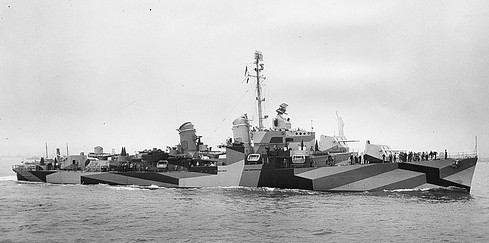This month congress passed a bill to change the MARPAT (MARine PATtern) colors for Afghanistan. MARPAT is a pixilated camouflage that make soldiers practically invisible:
pixelated camouflage is best
But camouflage is tricky and counterintuitive. The point of camouflage is to disguise yourself against the enemy, but in WWI somebody discovered that a wild abstract art pattern did a better job than the traditional blue-gray camouflage coloration.
This is a counter-intuitive camouflage, and it was a great surprise to discover that wild abstract colors and bold cubist patterns made a huge ship practically invisible:

Wild and bold, yet invisible to the naked eye
It’s clear that this “razzle dazzle” painting is from Brach’s cubist movement, and the evolving world of abstract art. But it really works! Dazzle camouflage is an optimal illusion whereby your eyes trick you into interpreting the abstract bizarre shapes into melding into the background, thus making the ship invisible at-sea:

The more biazrre the pattern, the better the camouflage
The British called this modern art style of camouflage "Dazzle Painting" while we Americans called it "Razzle Dazzle." In either case, it’s a real mindfucque, playing tricks with your eyes:

Wild patterns adorned aircraft carriers

In today's world of super-radar, hiding the visual acpects of large ships is not as important, but razzle dazzle camouflage is a great study into the optical delusions of human visual perception.

